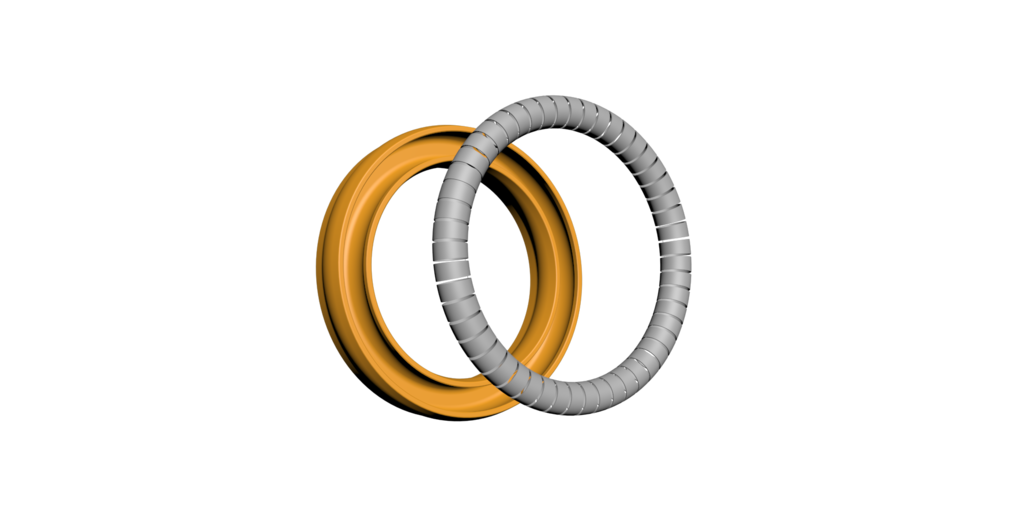
History Article
Original Furon & Seals History



The Race to Space
Between 1952 to 1955, the United States began to strongly pursue a variety of liquid-fueled rocket engine programs. It was determined early on that traditional soft seal materials & metal gaskets would not work with the liquid propellants being used in these new rockets.
Extremely low temperature cryogens such as LOX & LH2 precluded the use of ‘soft’ & ‘hard‘ seal materials as elastomers became as hard as aluminum and metals became brittle, losing their ductility.
Another problem inherent with metallic gaskets was the tremendous bolt load required to affect a seal. These high loads meant heavy flanges & numerous large bolts resulting in unacceptable weight penalties. Another obstacle to using conventional seals was their chemical incompatibility with hypergolic propellants such as UDMH, nitrous tetroxide and oxidizers.
Some of these propellants could wreak chemically induced damage due to leakage while others such as UDMH created serious and sometimes deadly health problems in vapor form.
This caused major disruptions in the industry, Key space companies such as Aerojet General, North American Rocketdyne, Lockheed & others spent millions of dollars (or lost millions due to contract delays) to solve these seal leakage problems. Most of the manufacturers experimented with or attempted to use PTFE (Teflon) but rejected its use as a sealing material early on due to its propensity to exhibit excessive creep (cold flow), even at room temperature


Finally, within a year or so of each other, three entrepreneurs from Southern California patented sealing solutions that overcame the rocket propellant sealing problems. Interestingly, they all used similar technical principles to achieve their purpose. Bill Reid of Long Beach, CA, utilized a helically wound, flat wire spring (round wire rolled flat) to energize a ‘U’ shaped PTFE cover/jacket. The spring, when squeezed in arch compression, supplied resilience to an otherwise semi-rigid material and provided the necessary dimensional stability after the PTFE had stabilized in its cold flow mode. The spring also compensated for wear of the PTFE in dynamic applications. Bill called his device “Omniseal”. Charles Tanner of Wilmington, CA, patented a similar device which he called a TEC RING (TEC = Tanner Engineering Co.). He utilized a slit spring material that he pre-stressed to achieve the required physical characteristics.
Mr. Tanner also invented the Quad Ring, a clever improvement over rubber o-rings for reciprocal motion applications. Roy Creath of Santa Monica, CA, patented the RACO seal (Roy A. Creath Co. = RACO). Creath took a slightly different approach from Reid & Tanner in that he used a ‘U’ shaped spring and its cantilever beam principle to supply resilience to a ‘U’ shaped cover or jacket. Creath’s design found broader use in cryogenic applications as his comparatively high spring loads did a better job of yielding the RACO, PTFE jacket at very low temperatures. This RACO seal has been used in space missions for over 60 years from the Mercury mission to Space Launch System (SLS) now.
Charles Tanner, Bill Reid and Roy Creath are among the unsung heroes of the space age. All three of these seal products and the firms which made them were purchased by Furon. Furon was later bought by Saint-Gobain and became Omniseal Solutions, which currently manufactures some of the original designs at our Garden Grove, CA, seal facility and has expanded to other facilities for global government agencies and private companies.